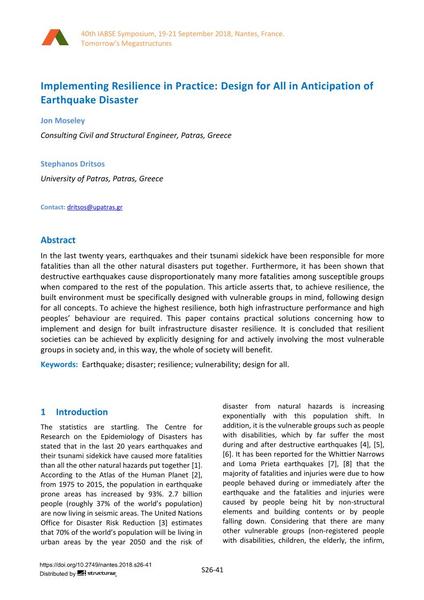Implementing Resilience in Practice: Design for All in Anticipation of Earthquake Disaster

|
|
|||||||||||
Bibliographic Details
| Author(s): |
Jon Moseley
(Consulting Civil and Structural Engineer, Patras, Greece)
Stephanos Dritsos (University of Patras, Patras, Greece) |
||||
|---|---|---|---|---|---|
| Medium: | conference paper | ||||
| Language(s): | English | ||||
| Conference: | IABSE Symposium: Tomorrow’s Megastructures, Nantes, France, 19-21 September 2018 | ||||
| Published in: | IABSE Symposium Nantes 2018 | ||||
|
|||||
| Page(s): | S26-41 | ||||
| Total no. of pages: | 8 | ||||
| DOI: | 10.2749/nantes.2018.s26-41 | ||||
| Abstract: |
In the last twenty years, earthquakes and their tsunami sidekick have been responsible for more fatalities than all the other natural disasters put together. Furthermore, it has been shown that destructive earthquakes cause disproportionately many more fatalities among susceptible groups when compared to the rest of the population. This article asserts that, to achieve resilience, the built environment must be specifically designed with vulnerable groups in mind, following design for all concepts. To achieve the highest resilience, both high infrastructure performance and high peoples’ behaviour are required. This paper contains practical solutions concerning how to implement and design for built infrastructure disaster resilience. It is concluded that resilient societies can be achieved by explicitly designing for and actively involving the most vulnerable groups in society and, in this way, the whole of society will benefit. |
||||
| Keywords: |
earthquake vulnerability resilience disaster design for all
|
||||
